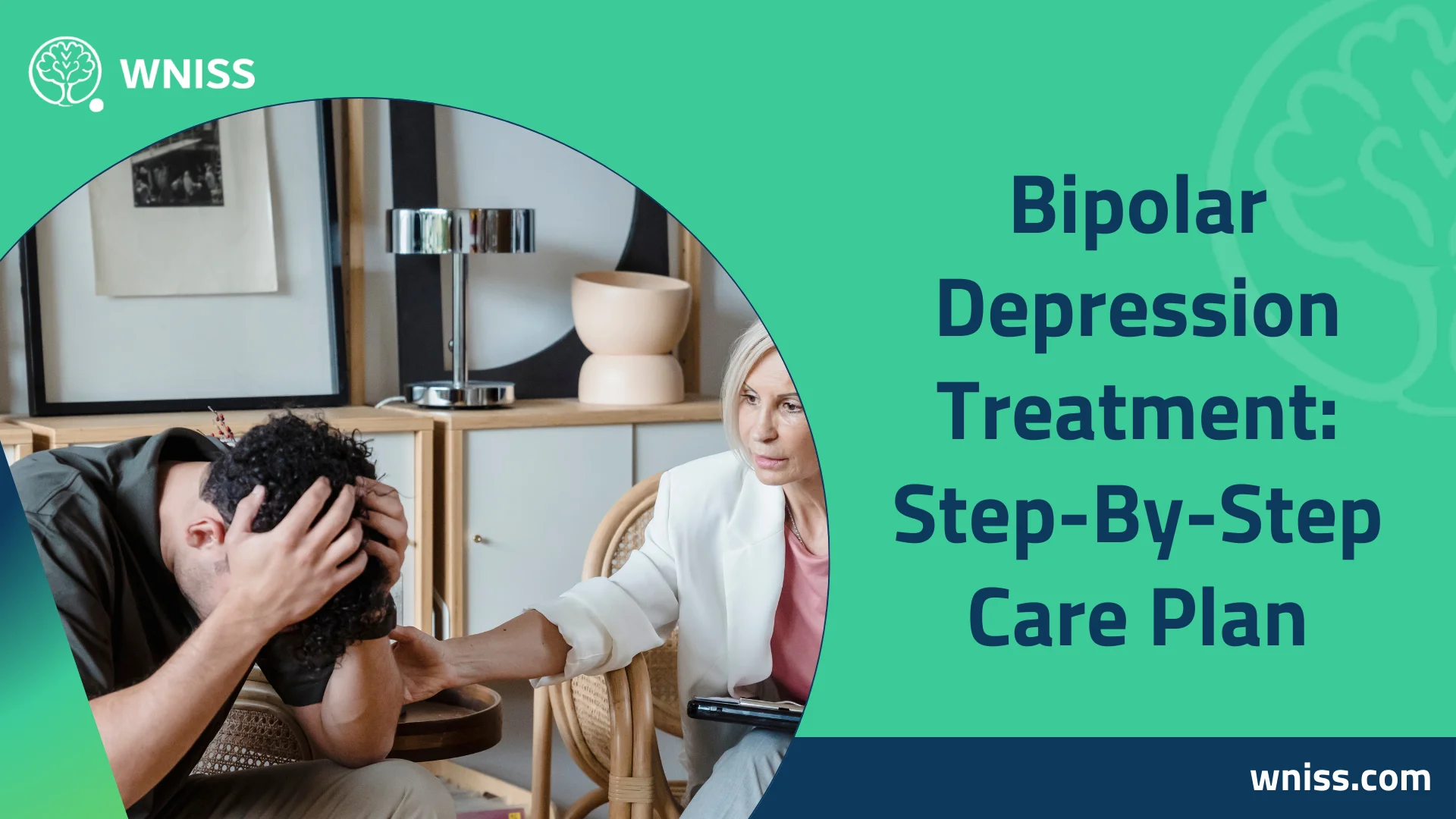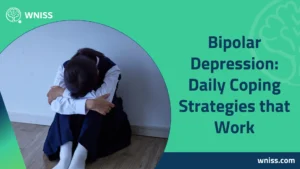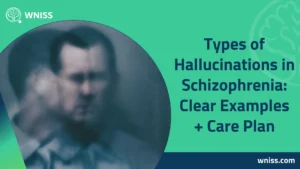When people search for bipolar depression treatment, they’re usually looking for more than lists—they want a plan that feels safe and practical. Bipolar disorder brings both depressive and manic or hypomanic episodes, so treatment must lift mood without triggering activation like reduced sleep or racing thoughts. The best approach combines evidence-based medication, targeted psychotherapy, and safety guardrails that keep progress steady. With the right plan, recovery can move forward in small, sustainable steps.
What “Bipolar Depression Treatment” Really Means?
In practice, treatment is a bundle: medication (when indicated) + a structured therapy + routine fixes that protect sleep/circadian timing—measured weekly so progress is visible.
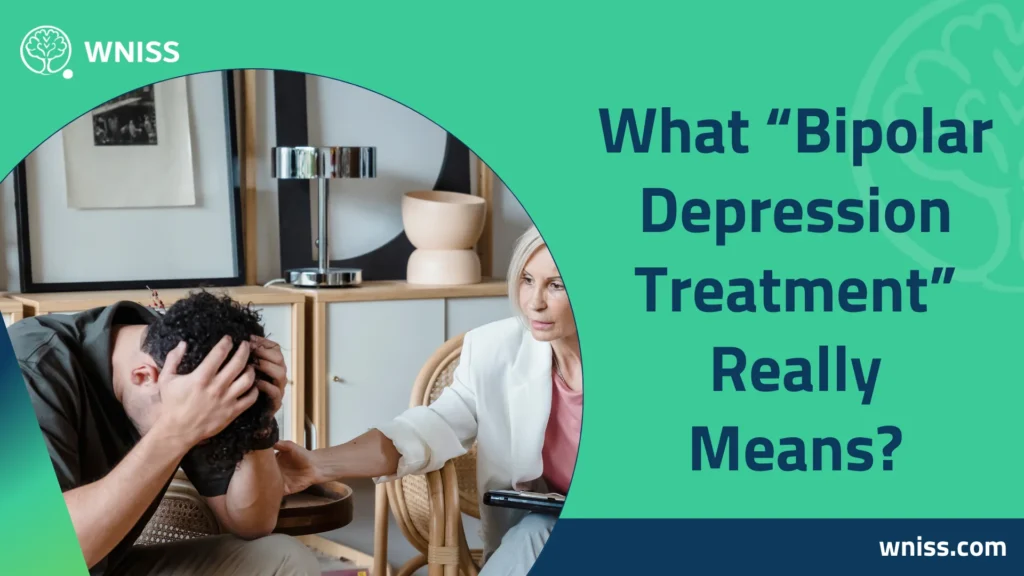
Core goals: lift mood, reduce relapse risk, and protect against switching into hypomania/mania.
Typical components you’ll see in a quality plan:
- Medication chosen for bipolar depression (not unipolar), with dose timing that supports sleep.
- Psychotherapy with real homework (CBT, IPSRT, FFT) so gains show up on your calendar.
- Rhythm protection: fixed bed/wake, morning light, caffeine cut-off, and brief daily movement.
- A simple 1-line nightly log to guide quick adjustments rather than guesswork.
Medication Options (Safety-first, phase-specific)
Medication choices for bipolar depression are not identical to unipolar depression. Your prescriber individualizes based on history, current symptoms, and medical factors.
Foundation options often considered (examples):
- Atypical antipsychotics with bipolar-depression evidence (e.g., quetiapine; olanzapine-fluoxetine combination; others per guideline review).
- Mood stabilizers (e.g., lithium optimization; lamotrigine for depressive polarity and prevention).
- Adjuncts for specific barriers (e.g., sleep onset/maintenance issues) when clinically indicated.
Important safety notes you’ll hear in clinic:
- Antidepressant monotherapy is not recommended in bipolar I and is contraindicated in mixed/manic states. If an antidepressant is used, it’s typically with a mood stabilizer and close monitoring for activation.
- Mixed features or rapid cycling require extra caution; the focus stays on mood stabilizers/atypicals and rhythm stabilization.
- Pregnancy planning/postpartum: perinatal psychiatry input is essential; some agents require special caution.
- When severe or resistant: ECT remains an effective, evidence-based option and is often faster than medication changes for urgent cases.
How to partner with your prescriber: bring a two-week sleep/mood log, list past medication responses/side effects, and agree on activation warning signs (e.g., falling sleep need, racing ideas, spending surges) that trigger an earlier check-in.
Psychotherapies That Move the Needle
Medication opens the door; therapy plus routines help you walk through it. Strongest evidence supports skills-based care with weekly measurement.
- CBT for Bipolar (behavioral activation + cognitive tools):
- Rebuilds approach behaviors (tiny tasks), challenges pessimistic predictions, and installs activation-safety rules for decisions.
- Interpersonal & Social Rhythm Therapy (IPSRT):
- Stabilizes bed/wake, meals, activity blocks, and social timing; a behavioral backbone that reduces relapse risk by aligning the body clock.
- Family-Focused Therapy (FFT):
- Turns conflict into collaboration with brief scripts, early-warning plans, and crisis steps everyone understands.
- How sessions feel when they’re working:
- You leave with 1–2 micro-assignments (5–20 minutes each), track them in a 60-second log, and see sleep and function improve within weeks.
Routine & Circadian Guardrails
Even the best medication plan struggles without stable timing. Small, repeatable habits keep your brain from drifting into activation or deeper lows.
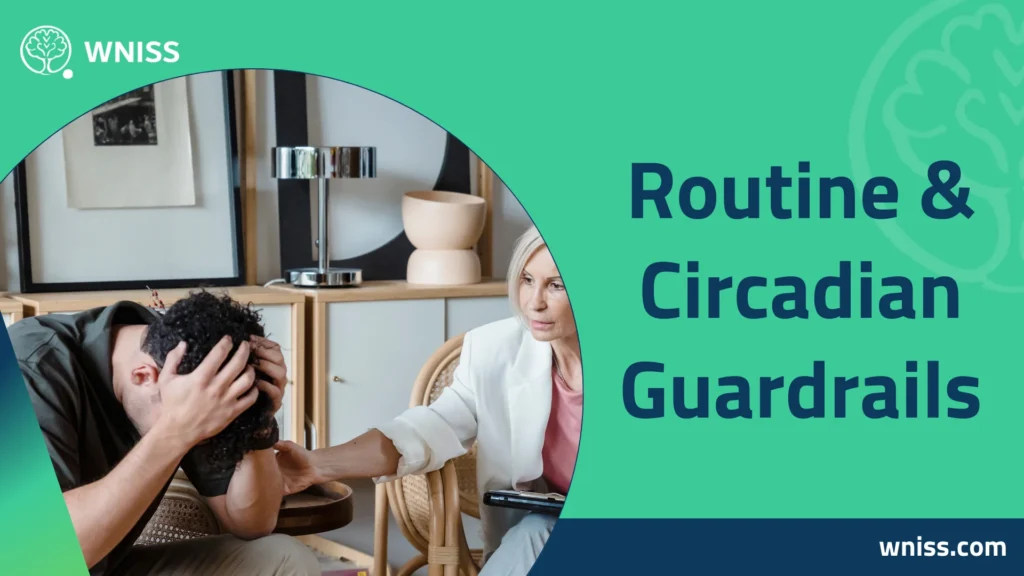
Daily anchors that matter most:
- Fixed sleep window (±30 minutes) and morning light within 60 minutes of waking.
- Caffeine last call 8+ hours before bed; screens down 60 minutes before bed; devices out of bed.
- 5–15 minutes of movement most days; two low-stakes social contacts per week to counter isolation.
- One-line nightly log: sleep hours, mood 1–10, meds taken, one “kept promise.”
When life gets messy (travel, deadlines, shift work):
- Keep the wake time fixed; use light exposure + a short morning walk; pre-plan naps (≤20 min, before 3 p.m.) if truly needed.
A 14-Day Activation-Safe Plan (tiny moves, real protection)
You’re installing rails so decisions aren’t left to mood at 11 p.m.
- Days 1–3 — Install anchors
- Do now: 10–20 minutes of morning light + 5–10 minutes of movement; start your nightly log; list 3 red flags (sleep <6 h ×2 nights, racing ideas, spending surge).
- Days 4–7 — Reduce noise & rehearse wins
- Do now: caffeine last call 8+ hours before bed; screens down 60 minutes before bed; install a wind-down (dim → hygiene → brief reading).
- Behavioral activation: 2 tiny tasks/day (5–20 min)—one self-care, one life admin.
- Opposite action: when urge = avoid, do the easiest version for 5 minutes.
- Days 8–10 — Add structure & support
- Do now: schedule a daily “focus hour” after light/movement for the hardest task; add two low-stakes social contacts (text/walk/coffee).
- Hold a 15-minute partner/family check-in: appreciations → what helped → one small change; confirm escalation triggers.
- Days 11–14 — Stress-test & tune
- Do now: simulate a late meeting/travel night; keep the same wake time next morning; use light + a brief walk to reset.
- Review your log with a clinician/coach; keep two habits, tweak one friction point (earlier caffeine cut, firmer wind-down).
If activation warning signs show up (sleep drops while energy/speed rise), call your prescriber, simplify tasks for 48–72 hours, and reinforce sleep timing.
Get Better, Safely — WNISS’s Bipolar Depression Reset (Online, Measured, Worldwide)
You don’t need scattered tips—you need one coordinated plan that fits your life and shows results on your calendar.
- Fast online assessment (days, not months): we map your episode history, sleep, triggers, and goals—then hand you a plain-English plan for the next 2–4 weeks.
- Therapy you’ll actually use: CBT + IPSRT with micro-homework that shows up in decisions, conversations, and sleep (not just in notes).
- Medication coordination: we liaise with your prescriber for activation-safe choices and smart dose timing (including travel/shift-work strategies).
- Dashboards you can trust: 60-second nightly logs and weekly reviews—progress becomes visible, not vague.
- Life-fit routines: anchors for parenting, study, or shift work so stability survives busy seasons.
Ready to feel movement again? Book a confidential session now at WNISS and start your 14-day plan with a specialist by your side.
FAQs about Bipolar Depression Treatment
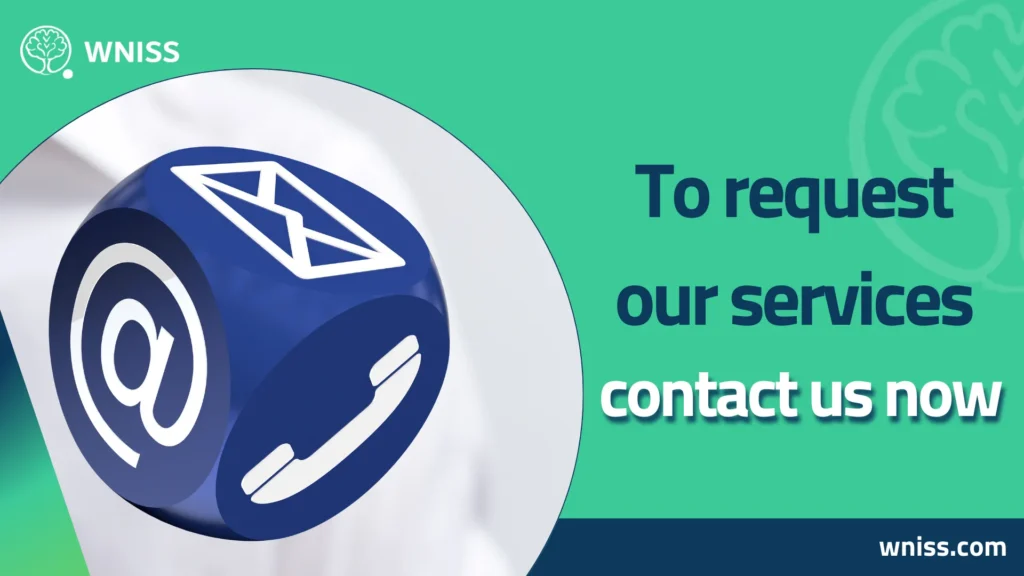
What is the best treatment for bipolar depression?
There’s no single “best” for everyone. The most reliable results come from a combined plan: guideline-supported medication for bipolar depression plus a structured therapy (CBT/IPSRT/FFT) and circadian guardrails (sleep timing, morning light), tracked weekly. Mood stabilizer/atypical antipsychotic options; no antidepressant monotherapy in bipolar I; therapy with real homework; fixed bed/wake and daily micro-actions.
How long can bipolar depression last?
Untreated episodes can last weeks to months. With integrated care and consistent routines, many people improve far faster. Start a two-week log; review weekly with your clinician; adjust medication/therapy and routines based on objective data (sleep hours, activation signals, task completion).
Can I reduce bipolar depression naturally?
“Natural” doesn’t mean “solo.” The safest approach is both/and: medical care plus behavioral levers. Protect sleep timing; get morning light; keep caffeine earlier; move 5–15 minutes/day; add two social touches/week; use opposite action for avoidance; coordinate all of this with your clinician.
Bipolar depression treatment works best when it’s integrated: medication tailored to bipolar depression, a skills-based therapy with weekly measurement, and small daily habits that make stability automatic. Install the 14-day plan, track one line each night, and tune with your clinician. If you want a precise, kind roadmap you can run from home, WNISS can help you start—this week.
Medical References
- National Institute of Mental Health (NIMH). Bipolar Disorder — Symptoms & Treatment.
https://www.nimh.nih.gov/health/topics/bipolar-disorder - NICE Guideline CG185. Bipolar disorder: assessment and management (adults).
https://www.nice.org.uk/guidance/cg185 - AAFP Clinical Review (2021). Bipolar disorders: evaluation and treatment (notes that antidepressant monotherapy is contraindicated in bipolar I, mixed/manic states).
https://www.aafp.org/pubs/afp/issues/2021/0215/p227.html

